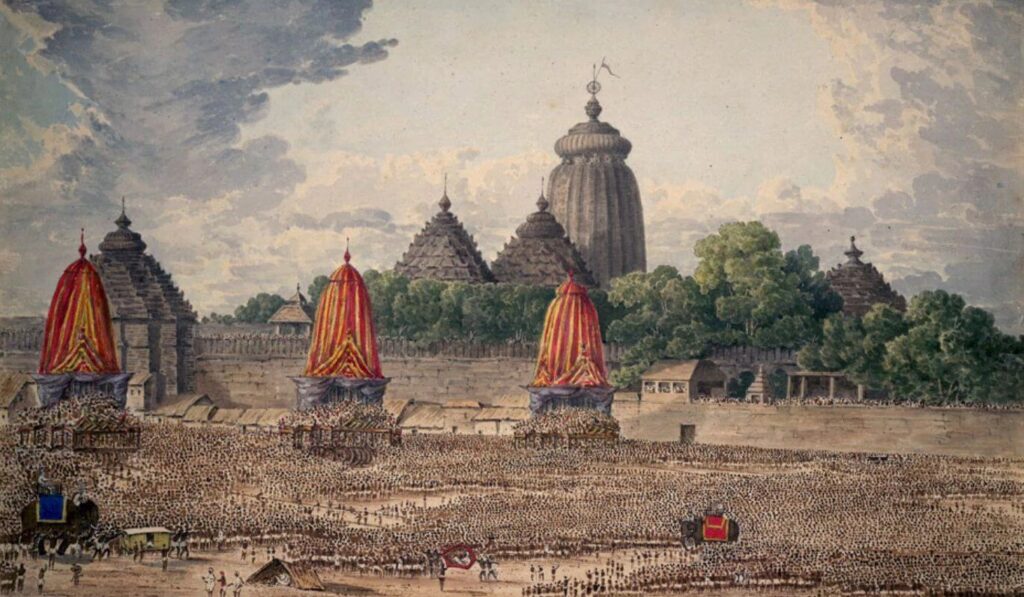
namo bhaktivinodaya
sac-cid-ananda-namine
gaura-sakti-svarupaya
rupanuga-varaya teI offer my respectful obeisances unto Saccidananda Bhaktivinoda, who is the transcendental energy of Caitanya Mahaprabhu. He is a strict follower of the Gosvamis, headed by Srila Rupa.
In 1868, while still at Dinajpur, Srila Bhaktivinoda Thakur wrote a Bengali poem on the glories of Chaitanya Mahaprabhu, called Sac-cid-ananda-premalankara. From that time on he became famous as “Sac-cid-ananda,” or one who embodies eternity, knowledge and bliss. Then in early 1869, he gave a lecture to a large congregation consisting of many prominent men of letters, religion and culture who had come from many parts of India, as well as some interested Englishmen. They had all come by the invitation of Khajanji Babu, an officer in the Government of Bengal.

At this time, controversy between the Dinajpur followers of Rammohun Ray, the Brahmos, and the town’s more conservative Hindus, was at its height. The Hindus were attempting to put the Brahmos out of caste, thereby ostracizing them socially. The Brahmos invited the Thakur to their assembly, assuming that as a Western-educated “modern” and “intellectual” Indian, he would side with them. However, he informed them that he was not a Brahmo, but rather the servant of the followers of Chaitanya Mahaprabhu.
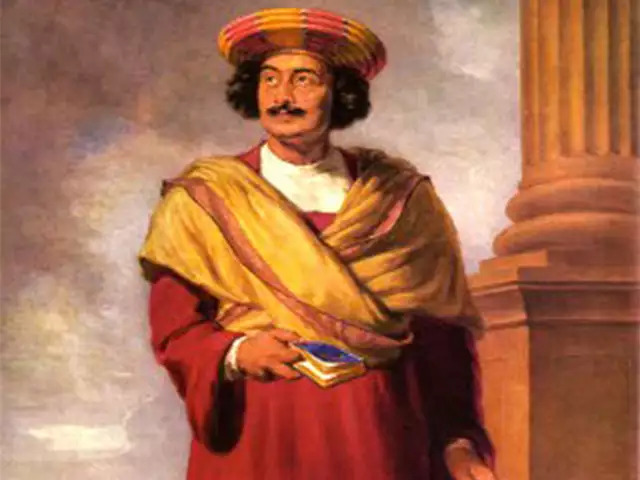
The Hindus then invited him to form an assembly for Hindus, and it was at their first meeting that he gave the above mentioned momentous lecture. This speech, which was received with overwhelming approval, later took the form of a book called The Bhagavat: Its Philosophy, Its Ethics and Its Theology. (Srimad Bhagavatam is also known as the “Bhagavat Purana.”) In this lecture, the Thakur openly criticized the sectarianism that characterized the religious strife between the Hindus and Brahmos.
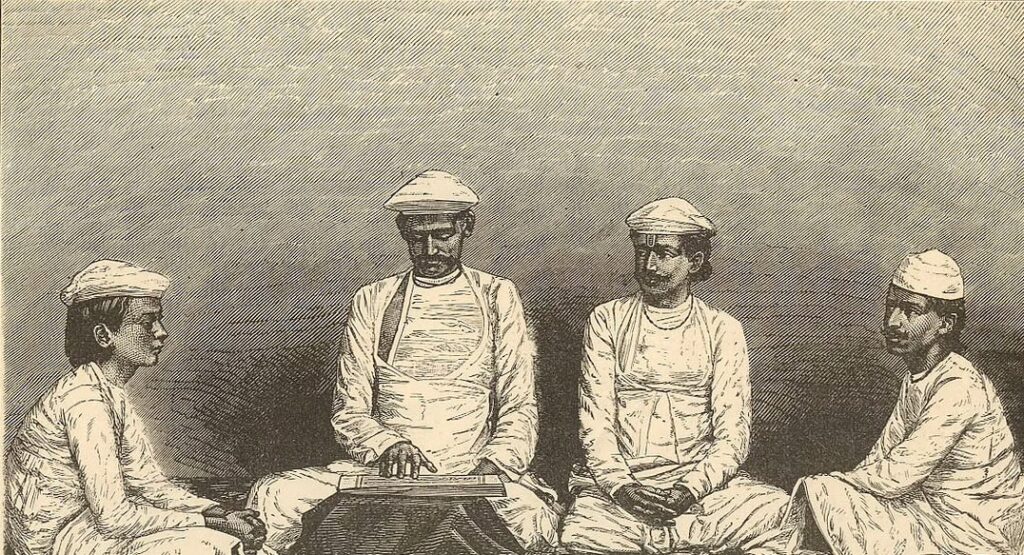
While instructing and requesting tolerance from the angry Hindus, the Thakur also explained the defects of the Brahmos thinking. But above all, he glorified the Srimad Bhagavatam’s great and universal message. Displaying the art of a true sadhu, the Thakur cut away at the false tenets of both parties, and presented them with the eternal truths of the Bhagavatam. But he did so in such a palatable, poetic and expert way, that all of his hearers were pleased rather than offended. The following quotes from this talk give some indication of its liberal, all-inclusive and non-sectarian wisdom:
… truth does not belong exclusively to any individual man or to any nation or particular race. And man, whether in the Poles or on the Equator, has a right to claim it as the property of his Father.
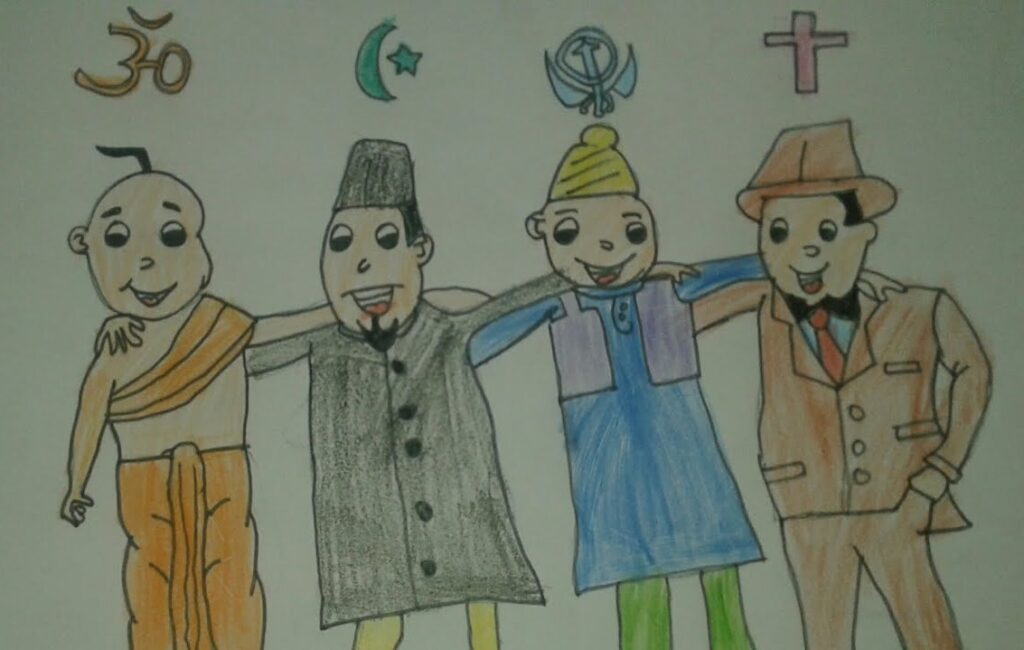
He states clearly the attitude with which one should approach religion generally and the Bhagavatam in particular, inviting us to become “true critics” with “a comprehensive, good, generous, candid, impartial and sympathetic soul.” The Thakur saw sectarian party-spirit as the greatest enemy of religion:
… As far as we can understand, no enemy of Vaisnavism will find any beauty in the Bhagavat. The true critic is a generous judge, void of prejudices and party-spirit. One who is at heart a follower of Mohammed will certainly find the doctrines of the New Testament to be a forgery by a fallen angel. A Trinitarian Christian, on the other hand, will denounce the tenets of Mohammed as those of an ambitious reformer.
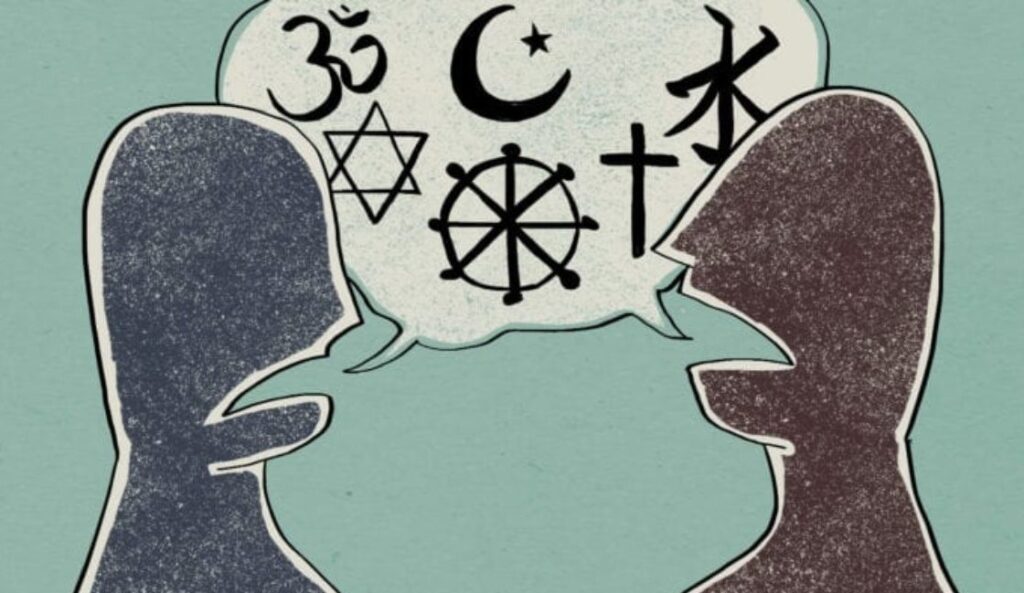
The reason simply is that the critic should be of the same disposition of mind as that of the author, whose merits he is required to judge. Thoughts have different ways. One who is trained up in the thoughts of the Unitarian Society or that of the Vedantist of the Benares School, will scarcely find piety in the faith of the Vaisnavas. An ignorant Vaisnava, on the other hand, whose business is only to beg from door to door in the name of Nityananda, will find no piety in a Christian. This is because the Vaisnava does not think in the way a Christian thinks of his own religion.
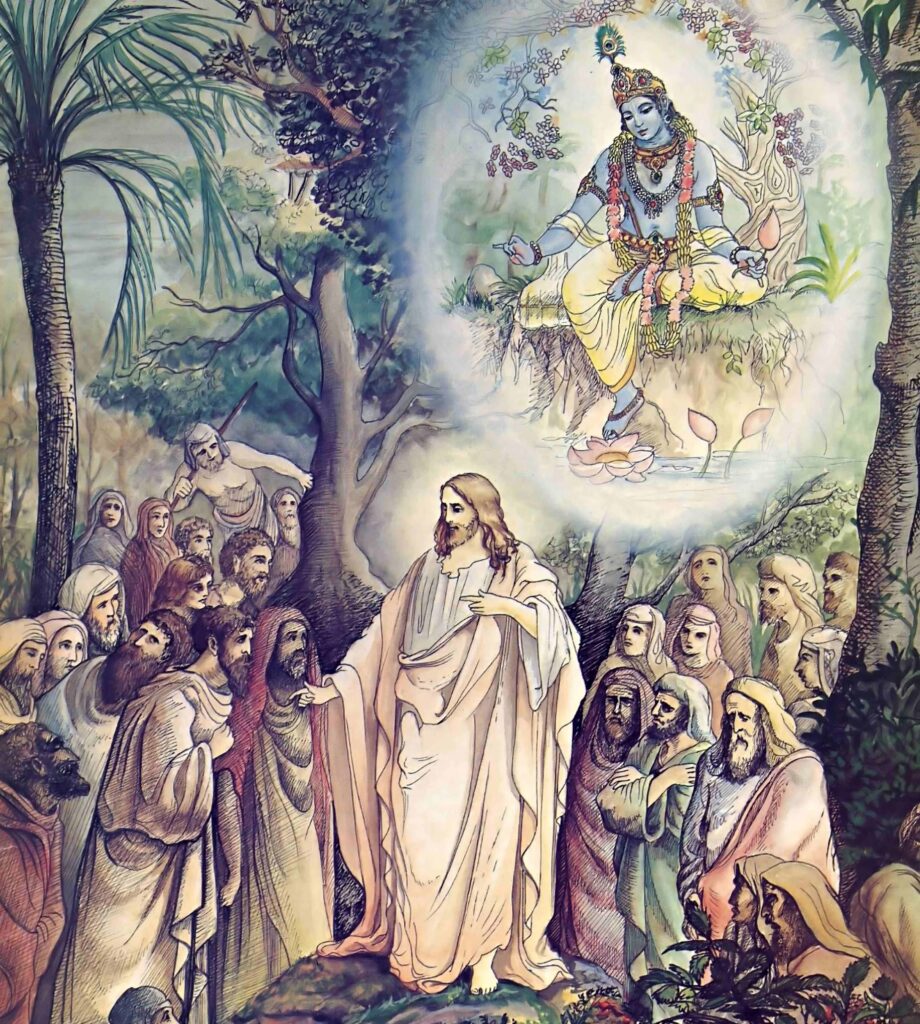
It may be that both the Christian and the Vaisnava will utter the same sentiment, but they will never stop their fight with each other only because they have arrived at their common conclusion through different ways of thought. Thus a great deal of ungenerousness enters into the arguments of the pious Christians when they pass their imperfect opinions on the religion of the Vaisnavas.
Subjects of philosophy and theology are like the peaks of large towering and inaccessible mountains standing in the midst of our planet, inviting attention and investigation. Thinkers and men of deep speculation take their observations through the instruments of reason and consciousness. But they take their stand on different points when they carry on their work. These points are positions chalked out by the circumstances of their social and philosophical life, different as they are in the different parts of the world.
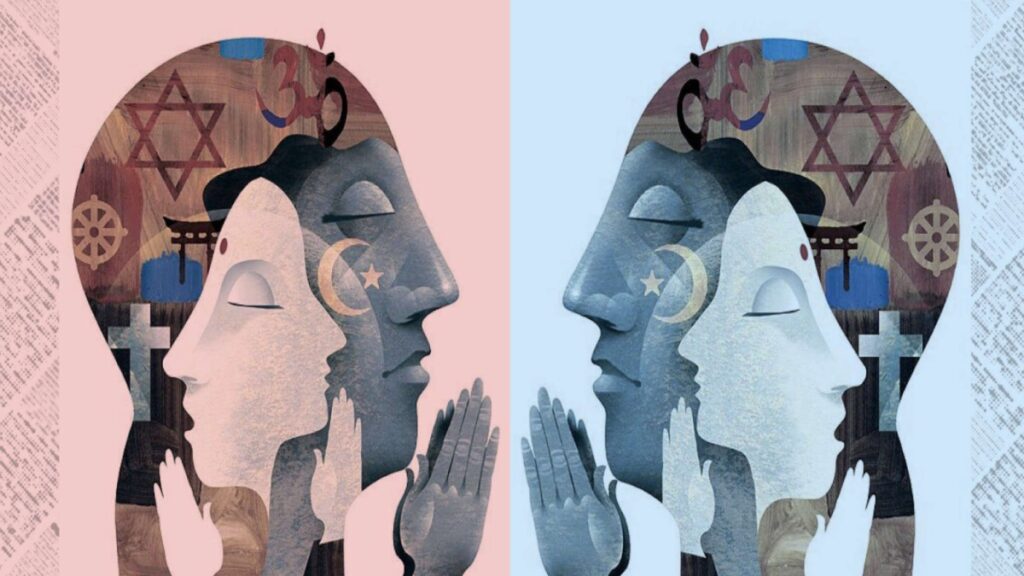
Plato looked at the peak of the spiritual question from the West, and Vyasa made the observation from the East; so Confucius did it from further East, and Schlegel, Spinoza and Kant and Goethe from further West. These observations were made at different times and by different means, but the conclusion is all the same in as much as the object of observation was one and the same. They all searched after the Great Spirit, the unconditioned Soul of the Universe. They could not but get an insight into it. Their words and expressions are different, but their import is the same.
They tried to find out the absolute religion and their labours were crowned with success, for God gives all that He has to His children if they want to have it. It requires a candid, generous, pious and holy heart to feel the beauties of their conclusions. Party-spirit – that great enemy of truth – will always baffle the attempt of the enquirer who tries to gather truth from religious works of their own nation, and will make him believe that the absolute truth is nowhere except in his old religious book.
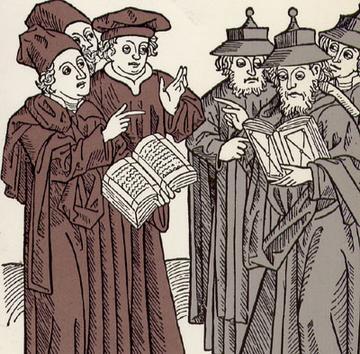
Jagannath Puri
Towards the end of 1869, Srila Bhaktivinode Thakur transferred to Champaran. While there, he studied law very intently and after taking his examination, he was to be moved to Matihari. The Thakur had requested a transfer to Puri in the state of Orissa, and at the last minute his transfer was granted. Puri is the holy dhama where Lord Chaitanya had lived continuously for the last eighteen years of his pastimes on earth, and where Lord Jagannath resides in His historic Temple with Subhadra and Balarama. The Thakur’s transfer to Puri engladdened his heart.
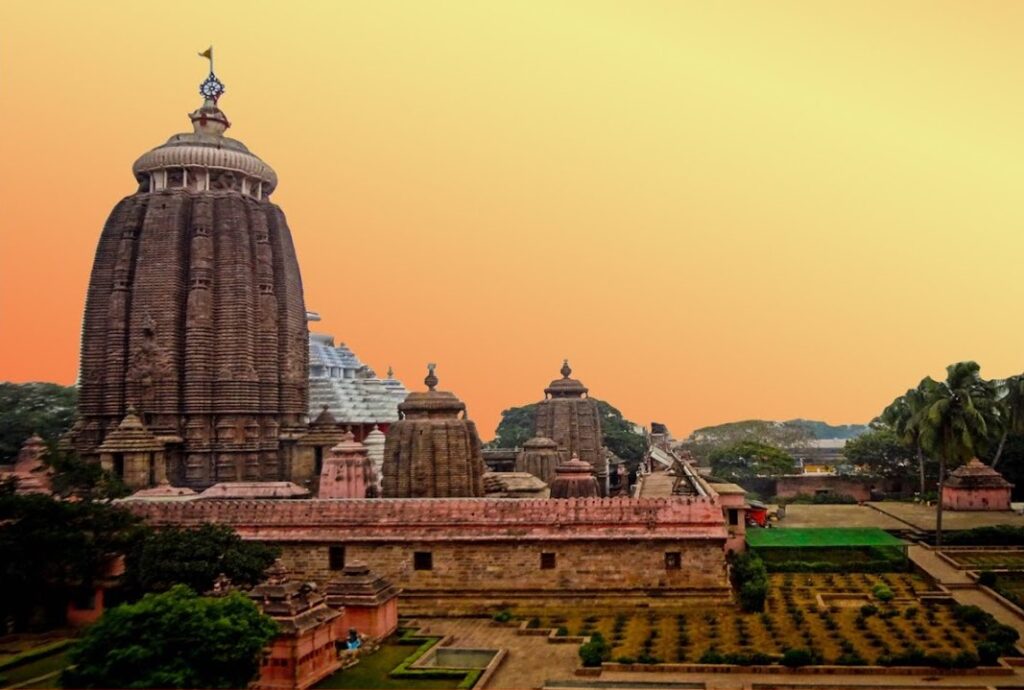
He took copies of the Srimad Bhagavatam and Sri Chaitanya-caritamrta with him. Arriving in 1871, he stayed for a few months alone, before bringing his family to live with him in a rented brick house. The Thakur sent his servant to bring his possessions from Matihari, and a government officer named Mr. Metcalf at first refused to release them. Mr. Metcalf had become very attached to the Thakur’s coming to his town, and was hoping to convince the Thakur to change his mind and stay. He finally allowed the servant to retrieve the Thakur’s effects with great reluctance and disappointment.
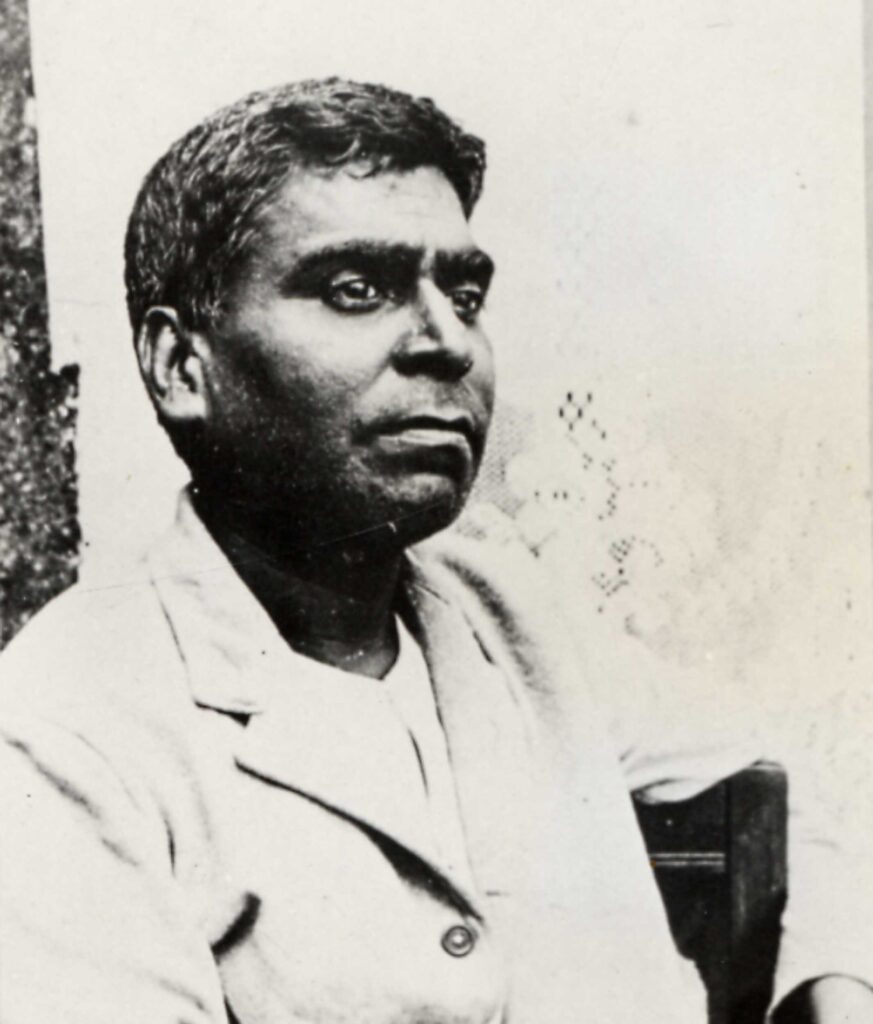
This was in fact a common occurrence during the Thakur’s life. Srila Bhaktivinoda Thakur was such an attractive personality that whole towns would lament his departure, while officers of the British Government were beginning to fight over him. As a devotee of the Lord he was free from envy and the well-wisher of all. He was an emblem of morality and very expert in the execution of his duties, making him always in demand and completely trusted by the government officers.
There were often incidents of racism and contempt towards educated Indians by British government officials, and often Indians were treated as third-class citizens during the time of the Raj. Srila Bhaktivinoda Thakur never complained of any such treatment in his autobiography, and his overwhelming competence, intelligence and purity made him greatly respected by Indians and British alike.
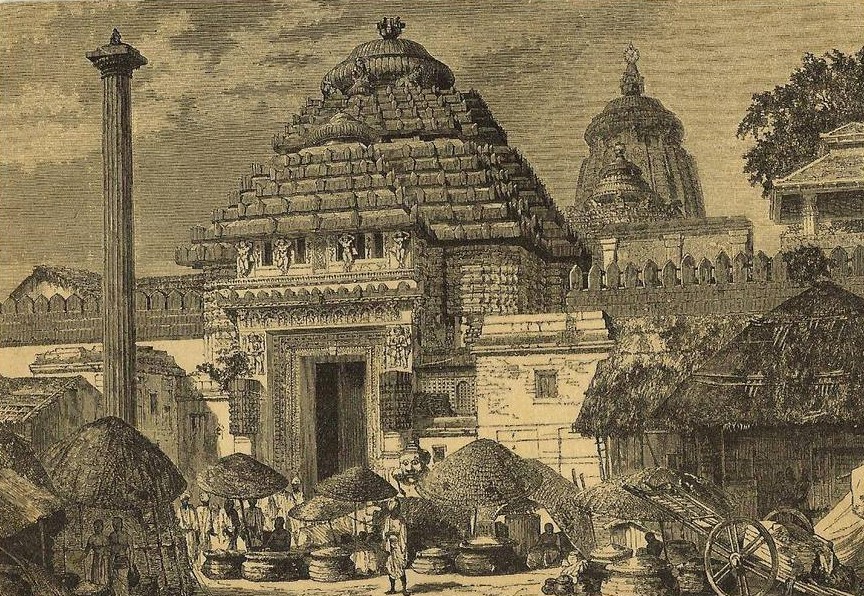
Apart from his position as Court Magistrate, Srila Bhaktivinoda Thakura was also given the role of manager of Jagannath Puri Temple. The British Government appreciated Srila Bhaktivinoda Thakur’s ability to administer the law and simultaneously deal sensitively with the religious life of Puri on their behalf, without aggravating the local people. As Temple manager, he used his government powers to establish regularity in the worship of the Deity. During his time at Puri, the Thakur went daily to see Lord Jagannatha:
Every day I went to see Jagannath at Sri Mandira. At the time of darshan I remembered the emotions of Sri Mahaprabhu, and I felt very blissful.
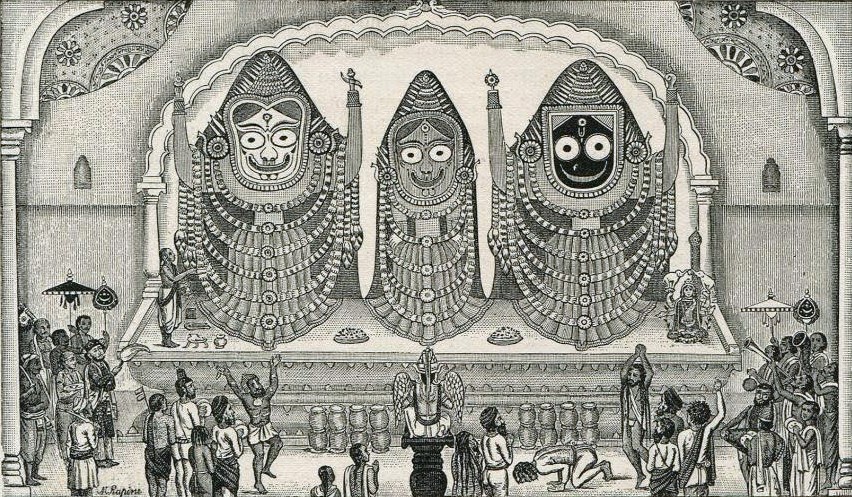
During his early days at Puri, the Thakur composed a poem while contemplating the Samadhi (tomb) of Srila Haridas Thakur, the great “Namacharya” or Professor of the Holy Name. Haridas’ Samadhi is still found at the seashore at Puri. The poem was titled “On Haridas Samadhi.” I have quoted a few of its verses below:
Thy body rests upon the sacred sands
Of Swargadwar near the sea,
Oh! Hundreds come to thee from distant lands
To enjoy a holy, thrilling glee
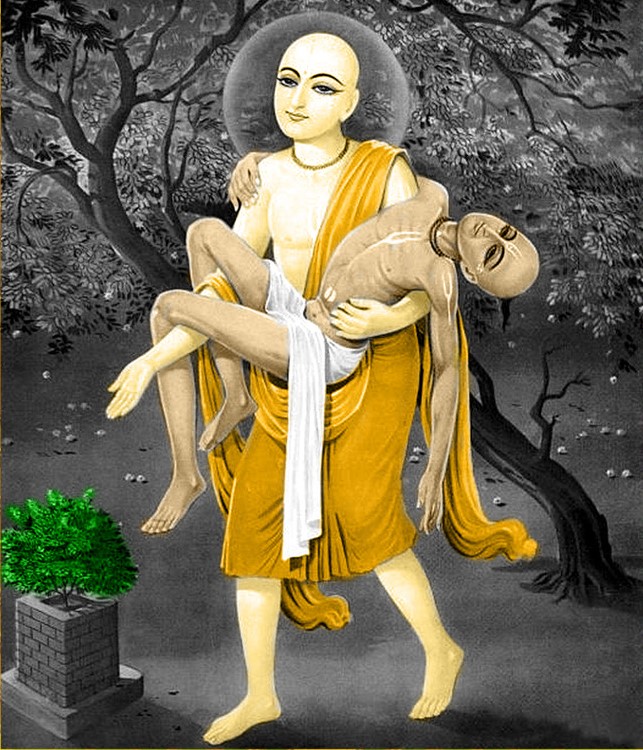
The waters roar and storming winds assail
Thy ears in vain, Ah! Vaisnava soul!
The charms of Brindaban thy heart regale,
Unknown the wheel of time doth roll!
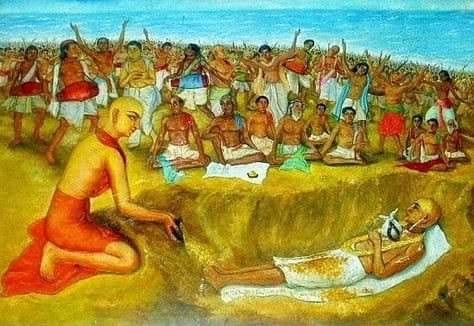
He reasons ill who tells that Vaisnavas die
When thou art living still in sound.
The Vaisnavas die to live and living try
To spread a holy life around.
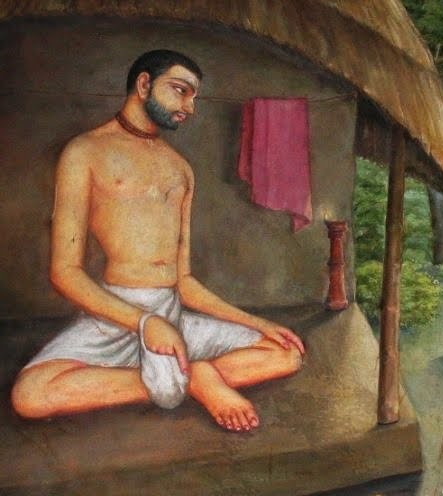
[Swargadwar is the sandy beach towards the south-western corner of the town of Puri. “Swarga” means heaven and “dwar” means gateway, so “Swargadwar” means “Gateway to Heaven.” Swargadwar is a sacred place. Lord Chaitanya bathed here, and according to scripture, the Brahmadaru log, from which the original deities at the Jagannath temple were carved, floated onto the beach at Swargadwar. Haridas Thakur’s Samadhi is situated here.]
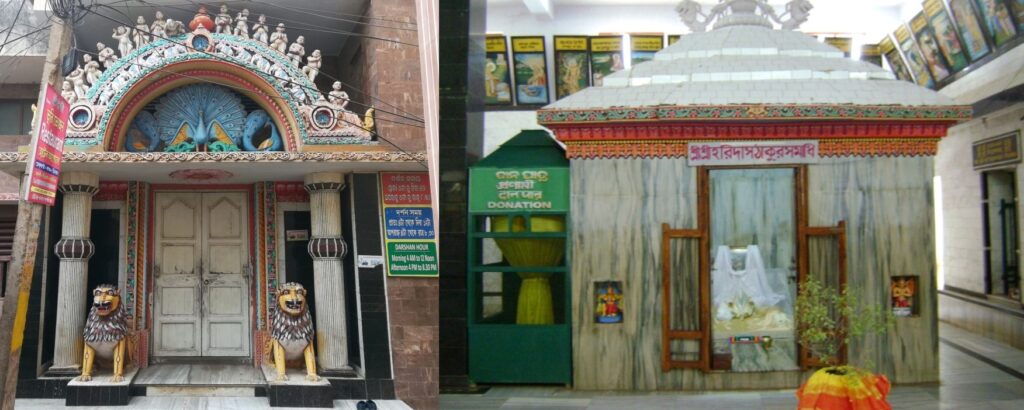
The Samadhi of Haridas Thakur
In 1871 the Thakur wrote another very wonderful poem, entitled Sharagrahi Vaisnava (“Surrender Vaisnava”) which illustrates the futility of trying to find happiness in material pursuits, describes the eternal nature of the soul, and champions the struggle of the soul to overcome various obstacles in order to achieve pure devotional service to God. Some verses from this poem include:
Alas for those who spend their days
In festive mirth and joy!
The dazzling deadly liquid forms
Their hearts for e’er employ!
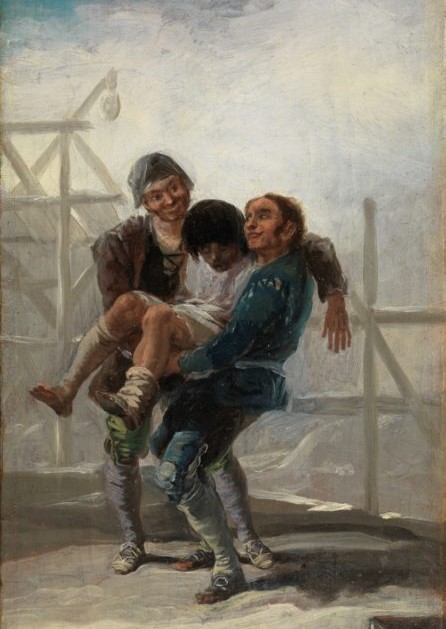
The shining bottles charm their eyes
And draw their heart’s embrace!
A slave of wine can never rise
From what we call disgrace!
……………………………………
The flesh is not our own alas!
The mortal frame a chain;
The soul confined for former wrongs
Should try to rise again!
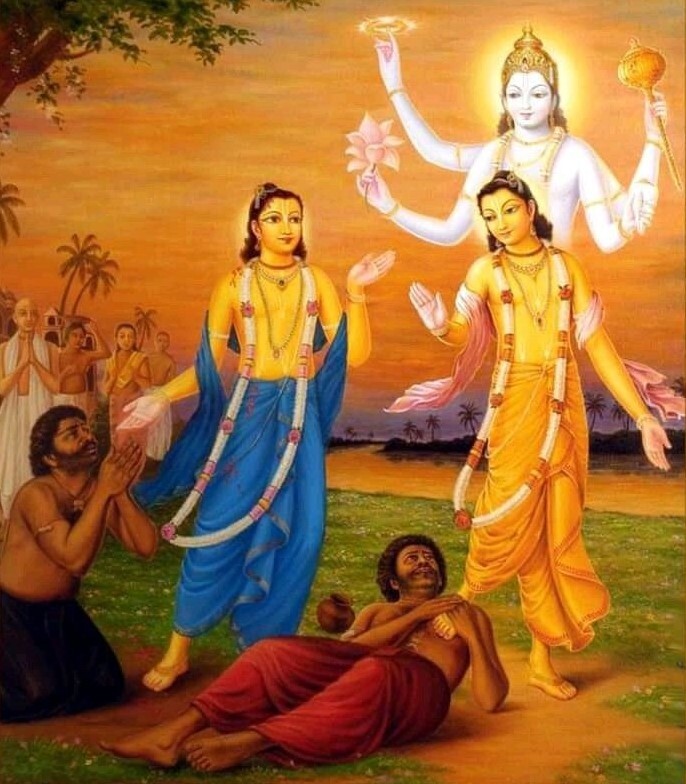
Our life is but a rosy hue
To go ere long to nought!
The soul alone would last for e’er
With good or evil frought!
…………………………………….
Man’s life to him a problem dark!
A screen both left and right!
No soul hath come to tell us what
Exists beyond our sight!
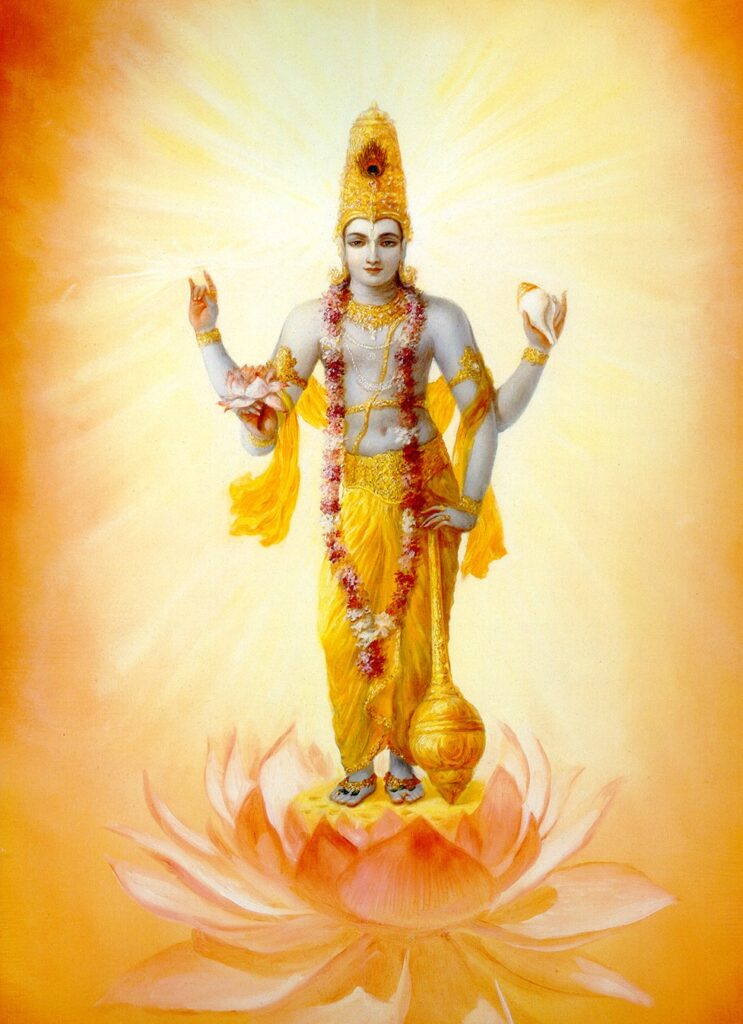
But then a voice, how deep and soft,
Within ourselves is felt:
Man! Man! Thou art immortal soul!
Thee death can never melt!
For thee thy Sire on High has kept
A store of bliss above,
To end of time, thou art Oh! His
Who wants but purest Love.
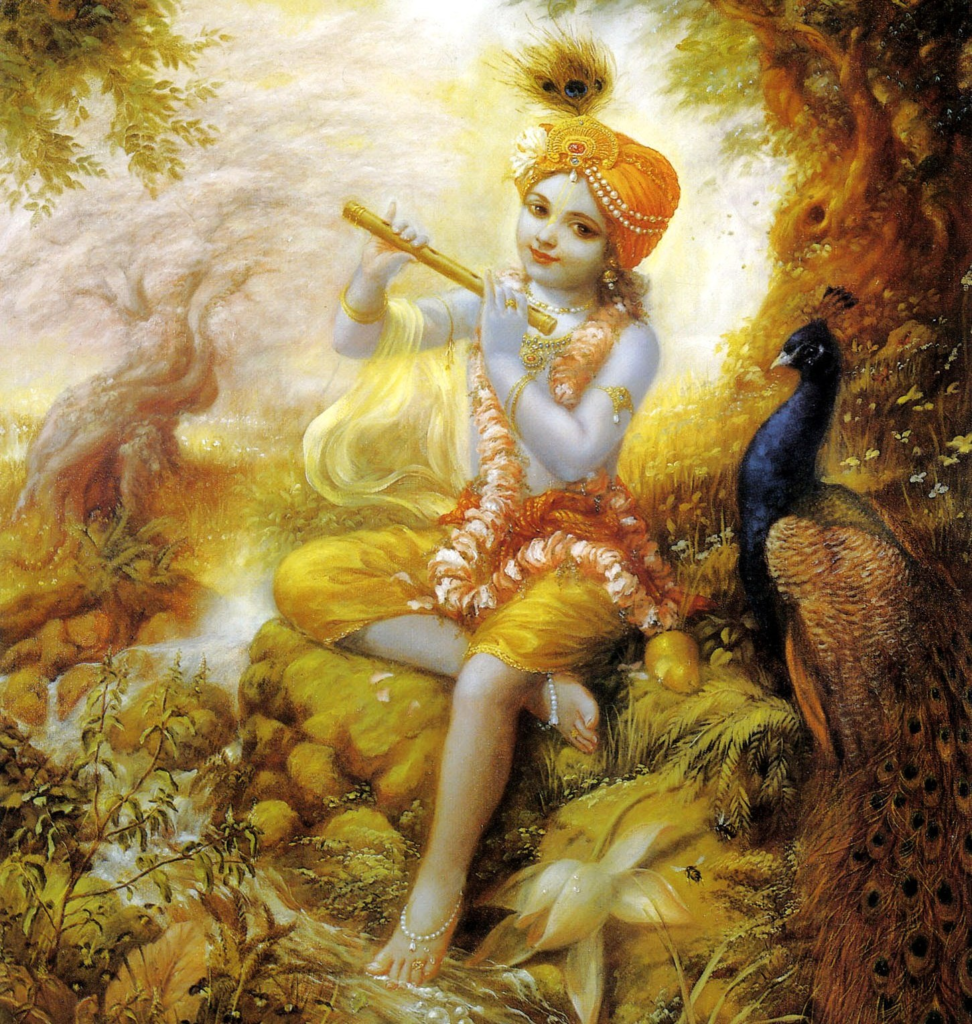
Oh love! Thy power and spell benign
Now melt my soul to God!
How can my earthly words describe
That feeling soft and broad!
……………………………………….
And then! My friends no more enjoy
Nor weep for all below:
The women, wine and flesh of beasts
No love on thee bestow!
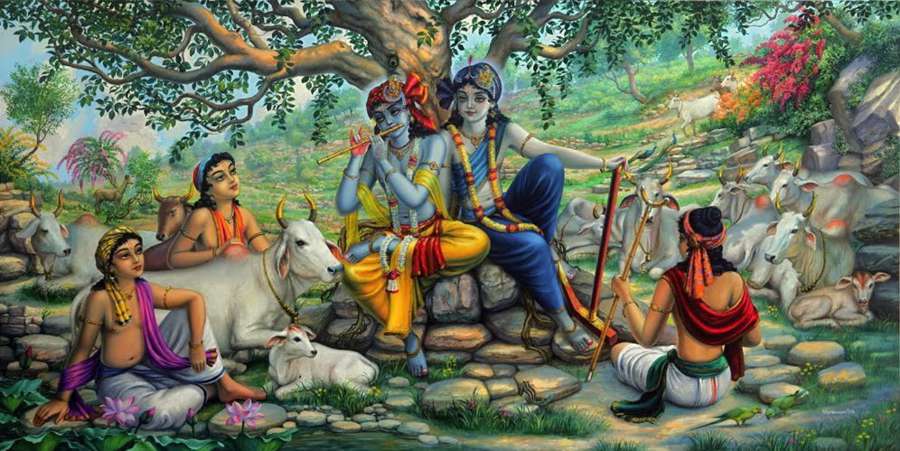
But thine to love thy brother man
And give thyself to God,
And God doth know your wages fair;
This fact is true and broad!
Forget the past that sleeps, and ne’er
The future dream at all,
But act in times that are with thee
And progress thee shall call!
……………………………………….
So push on thy onward march O Soul!
Against an evil deed
That stands with soldiers – hate and lust!
A hero be indeed!
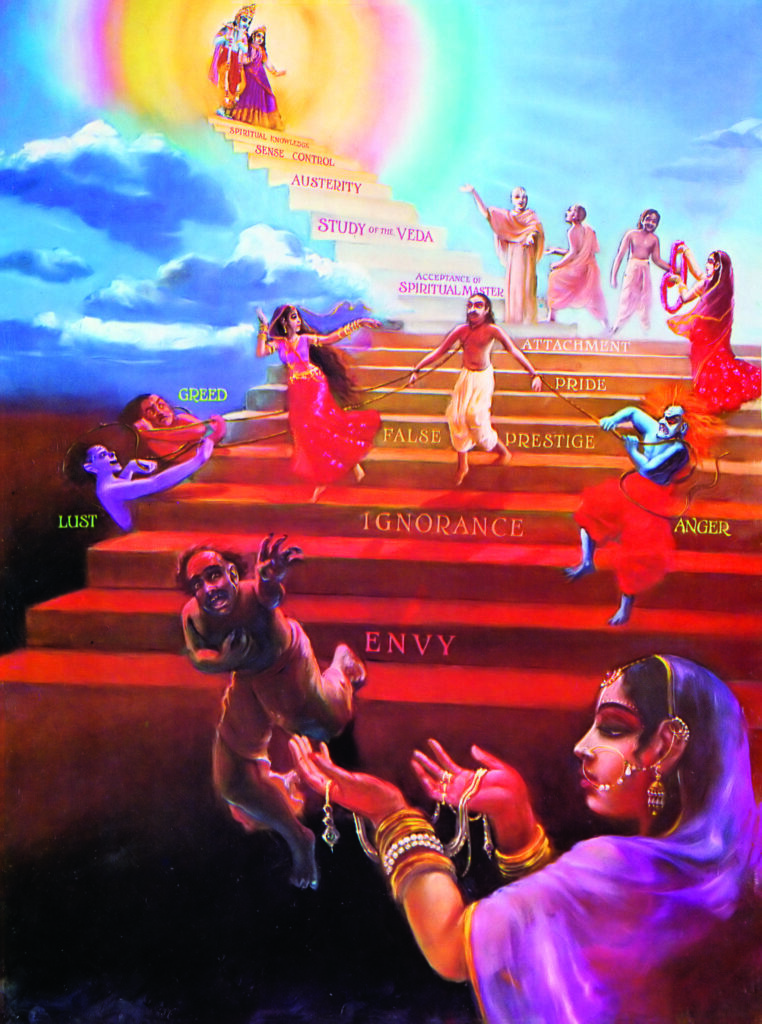
Maintain thy post in spirit world
As firmly as you can,
Let never matter push you down,
O stand heroic man!
O Sharagrahi Vaishnab Soul!
Thou art an angel fair:
Lead, lead me on to Vrindaban
And spirit’s power declare!
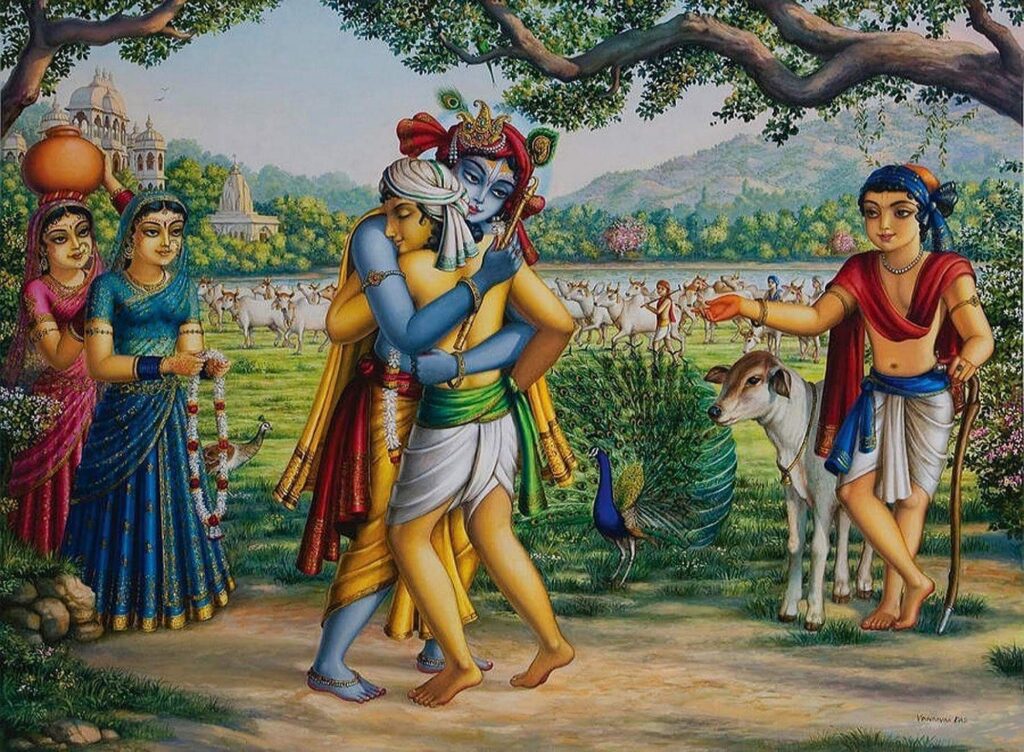
There rests my Soul from matter free
Upon my Lover’s arms,
Eternal peace and Spirit’s love
Are all my chanting charms!
In August 1871, Srila Bhaktivinode Thakur wrote an essay called To Love God, which was published in a journal of Tajpur, in which he analyzes Jesus’ first and greatest commandment:
Love God with all thy heart, with all thy mind, with all thy soul, and with all thy strength, and love man as thy brother.

He explains the deeper meanings of this statement, which he calls “an absolute truth, indeed” and elaborates on it in relation to the transcendental rasas or flavours of relationship experienced between liberated souls and Krishna, as found in Vaisnava theology. The concluding statements of this essay are as follows:
Oh God! Reveal Thy most valuable truths to all so that Your own may not be numbered with the fanatics and the crazed, and that the whole of mankind may be admitted as ‘Your own.’
While staying at Puri (1871-1876) Srila Bhaktivinoda Thakur had the opportunity to study various important Vaisnava literatures under the tutorage of learned Vaisnavas. He also polished his Sanskrit grammar, of which he had earlier learned the rudiments from Dvijendranath Tagore, a lifelong friend and brother of Rabindranath Tagore, a famous Bengali poet, writer, playwright, composer and philosopher. During his time in Puri, the Thakur learnt to compose in Sanskrit. He stated:
I appointed Gopinath Pandit as my tutor, and with his assistance I first studied the twelve cantos of the Bhagavatam with Sridhara Swami’s commentaries. … After finishing the Bhagavata I made a copy of the ‘Sat-sandarbha’ [by Srila Jiva Goswami] and read it. Then I copied and read the Vedanta commentary, ‘Govinda-bhasya,’ written by Baladeva Vidyabhusana. Next I read the ‘Bhakti-rasamrta-sindhu’ [by Srila Rupa Goswami]. Then I made a copy of the ‘Hari-bhakti-kalpa-latika.’
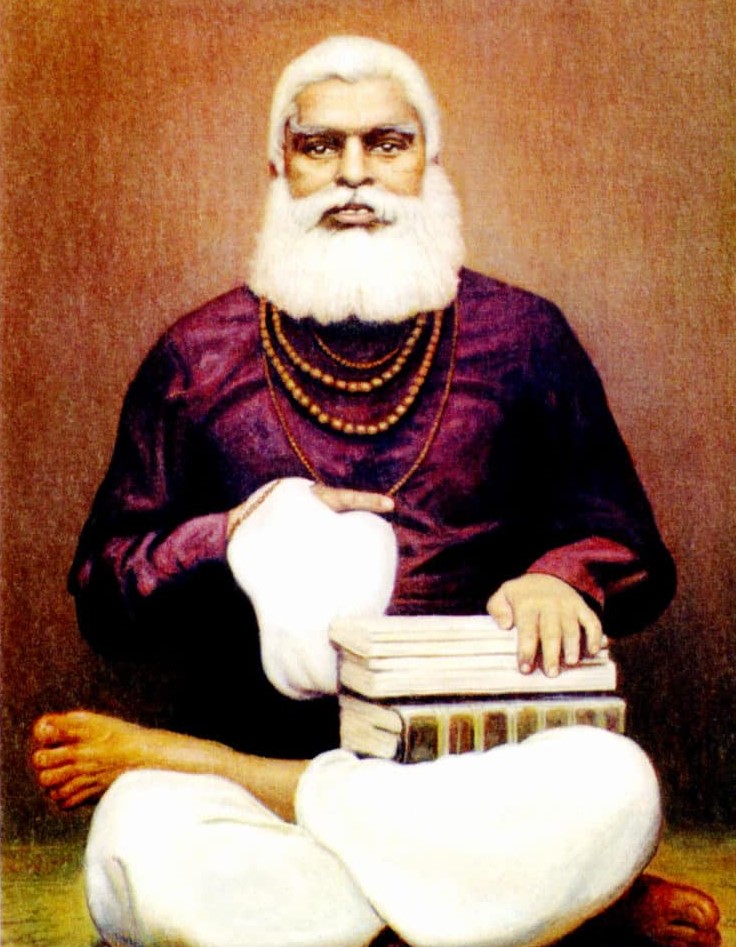
The latter work was an unsigned manuscript found by the Thakur, which he was much impressed by. It was later published by him and thereafter by his son, Bhaktisiddhanta Sarasvati Thakur. Thakur Bhaktivinoda also studied Prameya-ratnavali and other Gaudiya Vaisnava classics which he was able to secure from the library of the Raja in Puri and from the homes of Vaisnava pandits. He quickly became well-versed in the Gaudiya Vaisnava philosophy. He composed a book in Sanskrit called Datta-kaustubha in 1874, which consisted in 104 verses on Vaisnava philosophy with commentary, and he began composing the slokas of Krishna-samhita, one of his best known works.
Associating with Mahatmas at Puri
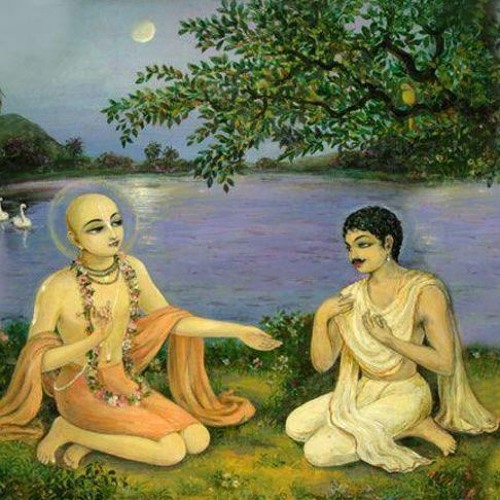
While living in Puri, the Thakur formed a society of devotees called the Bhagavata-samsat, which held meetings in the Jagannatha-vallabha gardens to discuss topics of Krishna. These gardens, said to be as old as the Jagannath Temple itself, were the former bhajan (worship) site of Ramananda Ray, the confidential associate of Lord Chaitanya. Many Vaisnavas and pandits attended the discourses, but one saintly devotee named Raghunath Das Babaji refused to join. Raghunath misunderstood the Society’s function and the position of Srila Thakur Bhaktivinoda.
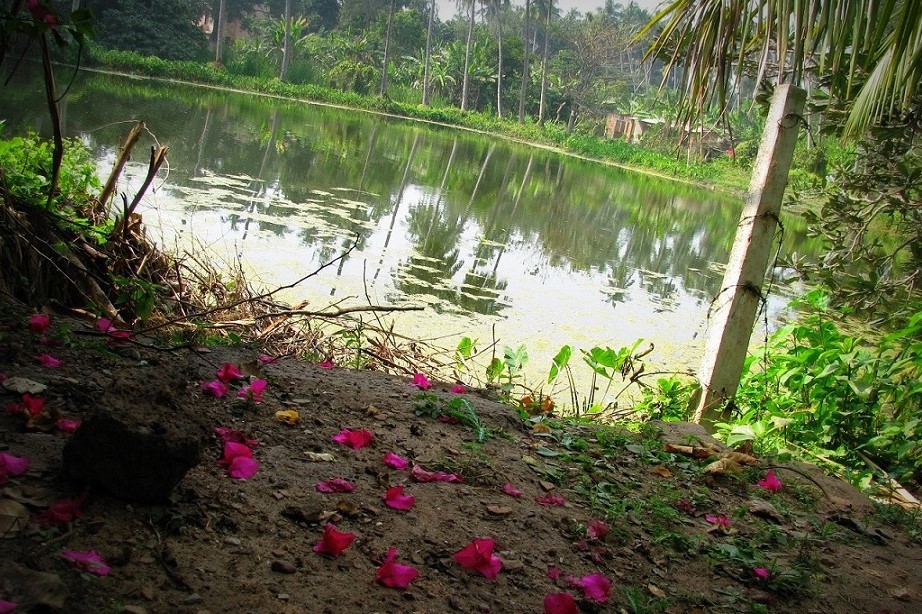
Raghunath was critical of Srila Bhaktivinoda Thakur because he was preaching but not wearing the Tulasi neckbeads and tilak traditionally worn by Vaisnavas. He did not consider the Thakur to be a real devotee and would not attend the meetings. He also encouraged others not to attend. Various biographers have recounted this incident. After criticizing the Thakur, the babaji became afflicted with a severe illness. One night in a dream, Lord Jagannath appeared to him and told him to pray for the mercy of Thakur Bhaktivinoda if he wanted release from certain death.
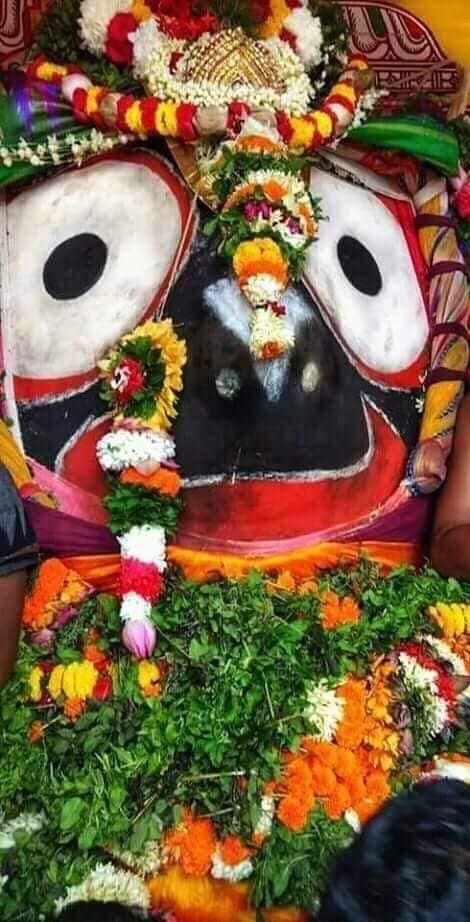
In the Gaura-parsada-caritavali by Hari-krpa das, a work containing biographical sketches of many great Vaisnavas, it is mentioned that upon awakening, the babaji quickly approached the Thakur’s residence and fell at his feet begging forgiveness for his offence. He spoke humbly to the Thakur saying, “I noticed that you never wore Tulasi beads upon your neck nor tikak on your forehead, and because of this I disrespected you and have committed an offense. Please forgive me.” The Thakur replied:
Babaji Mahsaya, what is my crime? The Vaisnava tilak and Tulasi neckbeads are given by the diksha-guru, but so far Mahaprabhu has not sent me a diksha-guru. I therefore just chant the Holy Name on Tulasi beads. In this situation would it be good to whimsically wear tilak or neck beads?
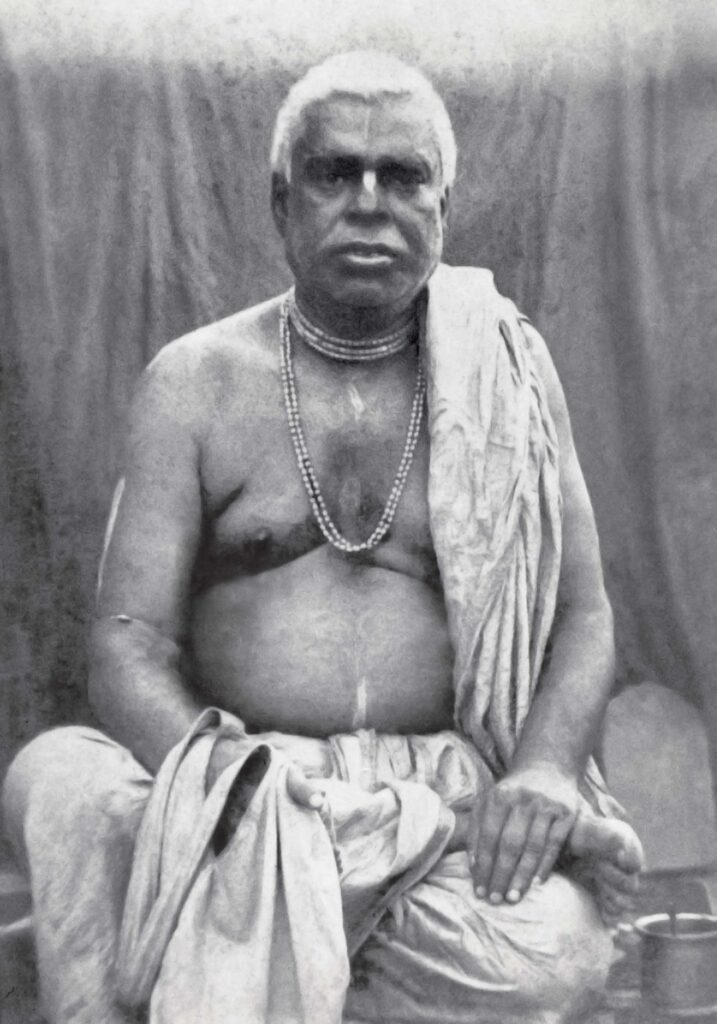
The Thakur said of this incident:
Babaji Mahasaya was a siddha-purusa [a perfected soul], therefore he could understand everything … he praised me and showed mercy to me. And I became his follower.
The Thakur arranged some medicines to help cure the babaji and completely forgave him for any offense. From that time on, Raghunath das Babaji had nothing but praise for the Thakur’s Vaisnava qualities.
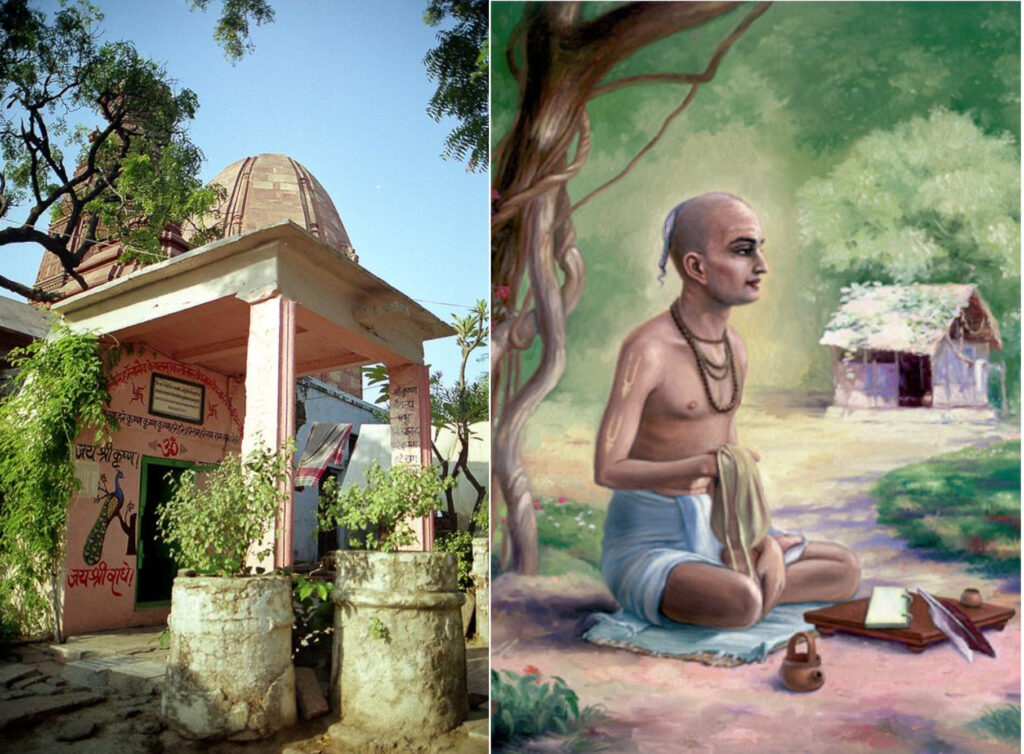
Sanatan Goswami and his Bhajan-kutira
On the way to the Samadhi of Haridas Thakur, near the Tota Gopinath Temple, was the bhajan-kutira of Sanatan Goswami. The bhajan-kutira is the cottage or hut where a great devotee worships the Holy Name by constant chanting. Some advanced renunciates regularly met there to chant the Holy Name. An especially great soul in that gathering, who later associated with Gaurkishora Das Babaji, was known as Svarupa Das Babaji. The Thakur recognized him as a paramahamsa and often visited him and sought his association. He described the activities of this saintly person in the following way:
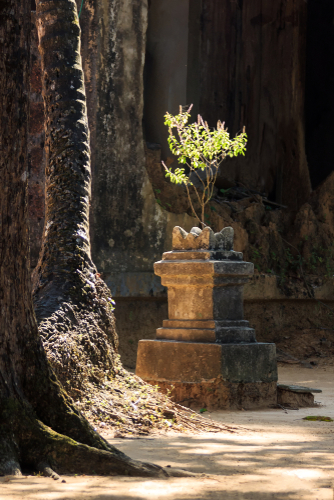
All day he would perform bhajana within his small cottage, and in the evening he would come outside and pay his prostrated obeisances to the Holy Tulasi tree. Then he would loudly chant the Holy Name and sing, dance and cry in ecstasy. At this time many Vaisnavas would come to get his darshan [audience]. Some of them would offer him small handfuls of Jagannath prasada. In order to satisfy his hunger he would consent to accept it, but he would not accept much. At this time one of the Vaisnavas would read from the ‘Chaitanya-bhagavata’ or other Gaudiya Vaisnava literatures, and he would listen.
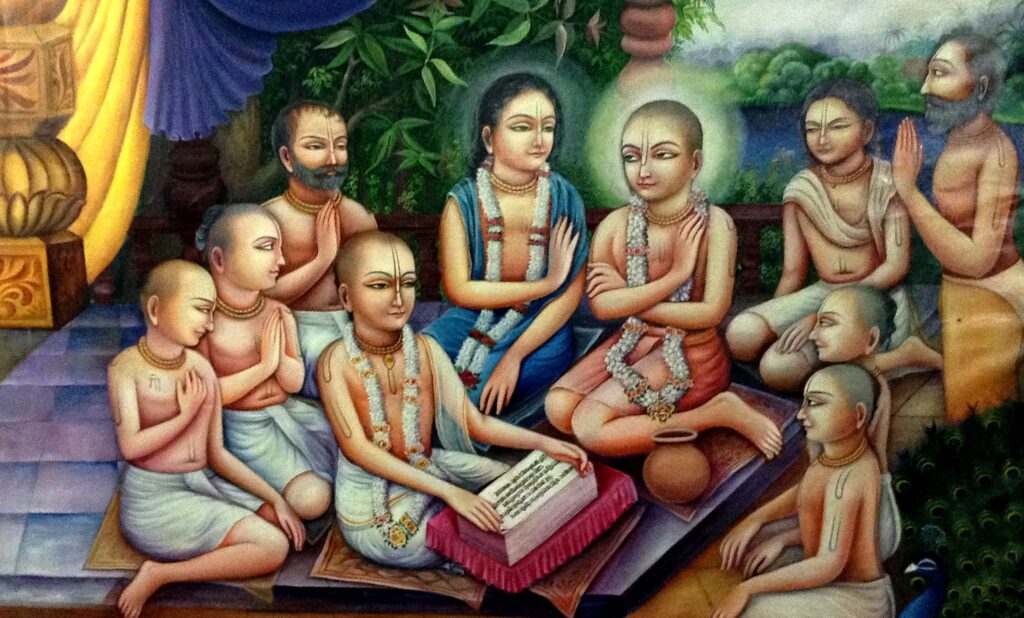
By 10 P.M. he would go to his kutira and again start his bhajana. In the middle of the night he would go to the shore of the ocean alone, wash his face and take a complete bath. He did this for fear some Vaisnava would perform some service for him without his knowledge. Since he was blind in both eyes, the question arises: how coud he go in the middle of the night to take his bath? Only Mahaprabhu knows. There was no doubt that he was a siddha-purusa, a spiritually perfected soul. He did not have a single material desire. In the evening I would sometimes go to take darshan of his lotus feet. He would talk to people and his speech was very sweet. He instructed me, ‘Krishna-nama bhulibe na’ – ‘Never forget the name of Krishna.’
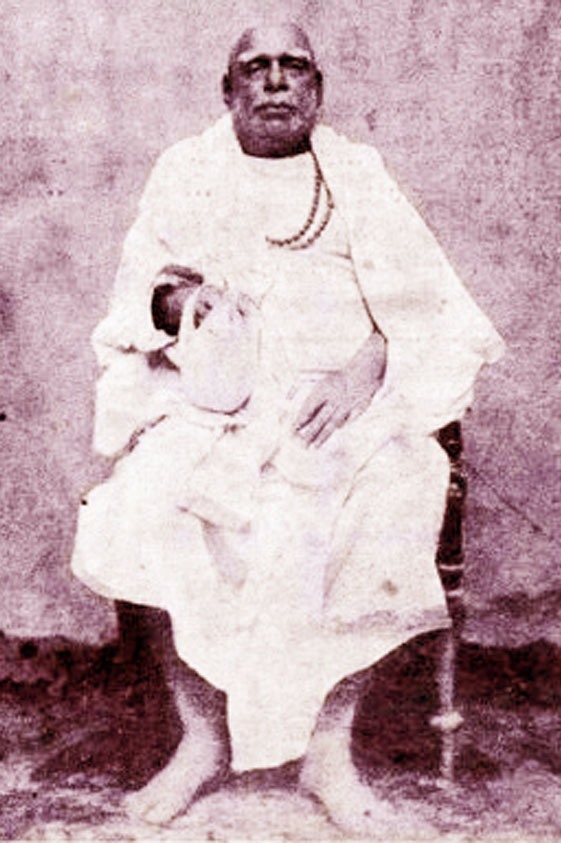
The Thakur further comments on his time at Puri in his autobiography:
While in Puri I made much advancement in devotional service. I became more detached from worldly life. [Any idea that I might have had] that worldly progress produces anything of lasting value was gone forever. Almost every evening I would go to the temple to see the Lord, to hear and chant the Holy Name and associate with the devotees … On one side of the temple was the Mukti Mandap. The brahmanas would sit there and give some instruction, but all of them were Mayavadis. When I would pass them my mind would become disturbed [because of the blasphemy of their teaching – denying the Lord’s form and eternal existence]. Therefore I would sit near the Goddess Lakshmi Mandira or the Mahaprabhu Pada-padma [Lord Chaitanya’s footprints, found in a sub-temple within the walls of the Jagannath Mandira]. When I was sitting there many of the pandits from the Mukti Mandap would come and sit [with me].”

Tota Gopinath Temple
Many of these Mayavadis [impersonalist philosophers] were converted to Vaisnavism through the association of Bhaktivinoda Thakur in what came to be known as the “Bhakti Mandap.” He would regularly lecture there on Srimad Bhagavatam. At various other holy places in Puri, such as the Tota Gopinath Temple, the samadhi of Srila Haridas Thakur, the Siddha Bakula tree and the Gambhira – the private apartment of Lord Chaitanya – the Thakur spent many hours absorbed in discussing transcendental subject matters and chanting the Holy Name.
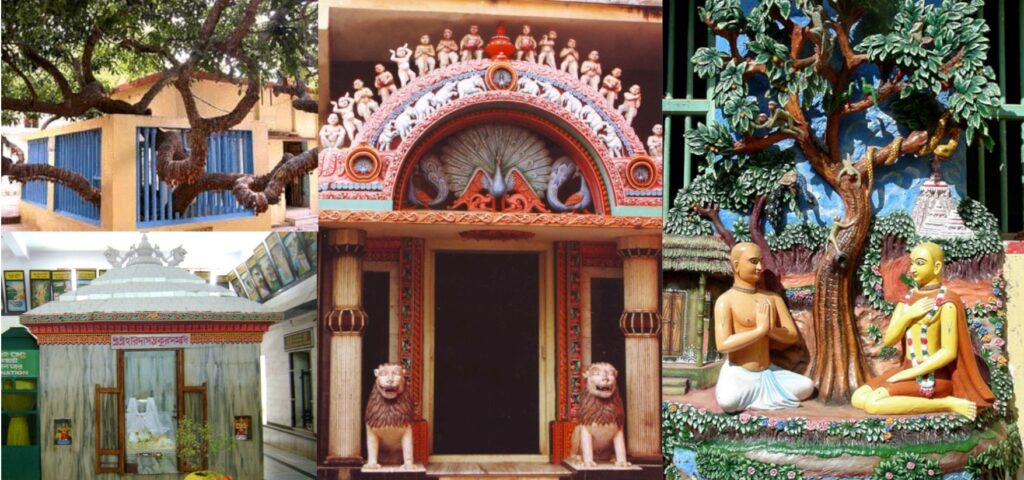
Siddha Bakula Tree where Haridas Thakur chanted his rounds and was visited by Lord Chaitanya, and Haridas’ Samadhi at Puri
He devoted much time to discussing the scriptures, and he prepared notes on the “Vedanta-sutra.” These notes were later published by Shyamalal Goswami, who included them in an edition of the “Vedanta-sutra” with the commentary of Baladeva Vidybhusana, called “Govinda Bhasya.”
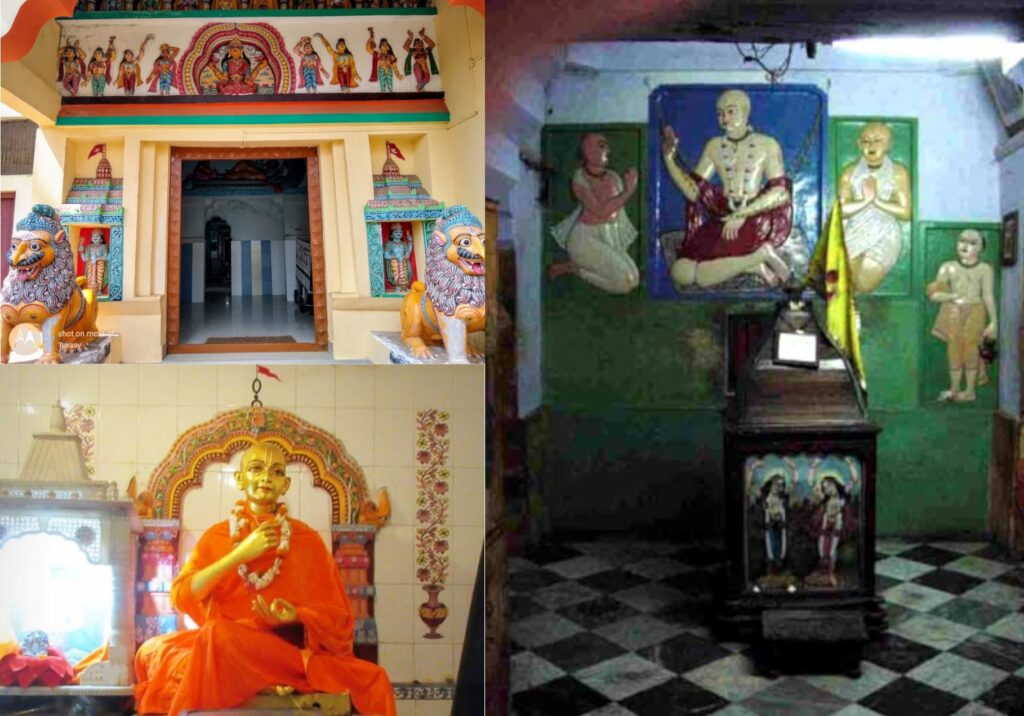
The Gambhira – Lord Chaitanya’s dwelling place in Puri, formerly Kashi Misra’s House
Birth of Bhaktisiddhanta Sarasvati at Puri
On the 6th February 1874 in Sri Purusottama Kshetra (Jagannatha Puri), the fourth son of Bhaktivinoda Thakur took birth. He was named Bimala Prasada, but was later known as Srila Bhaktisiddhanta Sarasvati. Bhaktivinoda Thakur had prayed for the Lord “to send a Ray of Vishnu” [a shaktavesh avatar or empowered living entity] to preach the message of Sri Chaitanya Mahaprabhu all over the world. He was born near the Jagannath-vallabha gardens, in a large house adjacent to the Narayana Chata Matha.
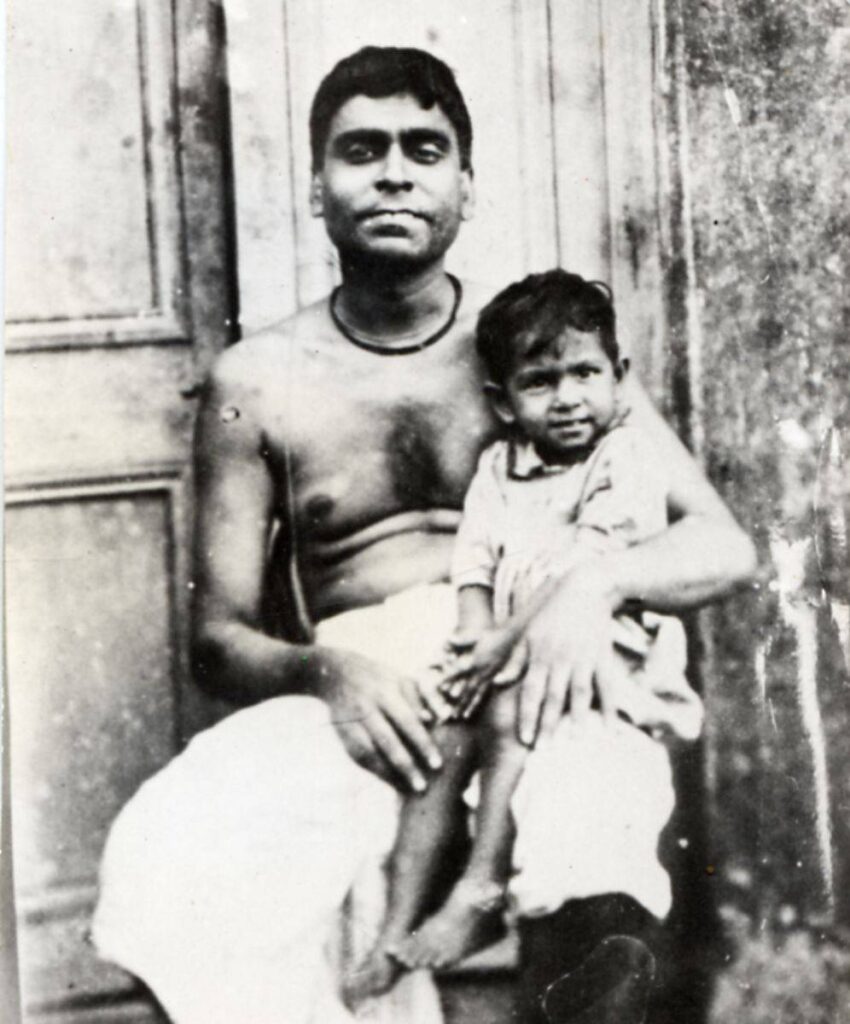
Srila Bhaktivinoda Thakur and Bimala Prasada, later known as Srila Bhaktisiddhanta Sarasvati
When the child was six months old, Lord Jagannatha’s cart stopped in front of Srila Bhaktivinoda Thakur’s house in Puri for three days during the Rathayatra procession. Bhaktivinoda told his wife, Bhagavati Devi, to bring out the child for darshan of Lord Jagannath. As she placed the child before the Lord, a garland from the Lord fell down and encircled the baby boy. Srila Bhaktivinoda Thakur took this as a sign that his prayers had been answered.
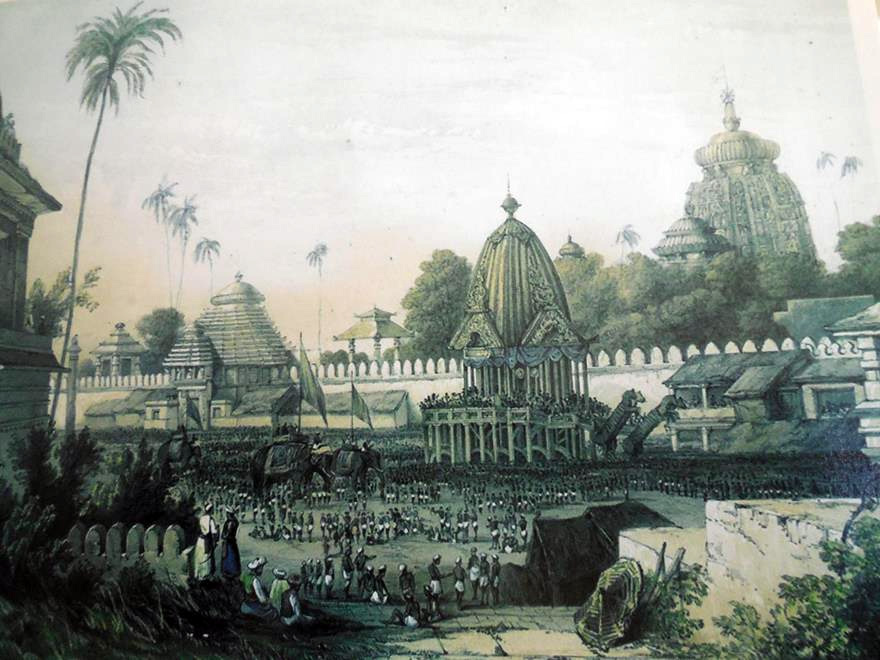
Near Bhubaneswar, now the capital of Orissa, in the town of Kamanala, there lived a powerful mystic yogi named Bisakisena. In the first year of Bhaktivinode Thakur’s stay in Puri (1871) the Thakur was given the task of quelling the disturbance caused by this mystic yogi, who claimed to be an incarnation of Maha-Vishnu, and threatened to deliver India by killing all Europeans. The story illustrates both the fearless nature of great Vaisnava devotees, and how they are fully protected by the Lord. This amazing story will be told in a later post.
Chastising the Raja of Puri
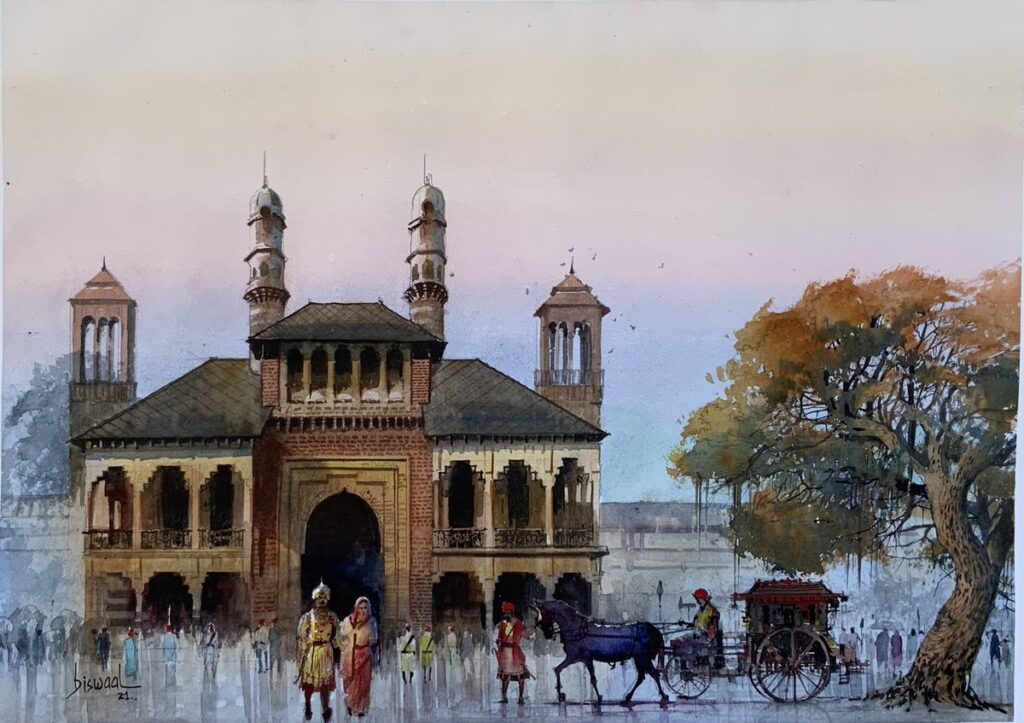
One day, while Thakur Bhaktivinoda and other devotees were sitting in the Bhakti Mandap, reciting Srimad Bhagavatam, the Raja of Puri, along with about fifty of his attendants, burst noisily into the meeting.
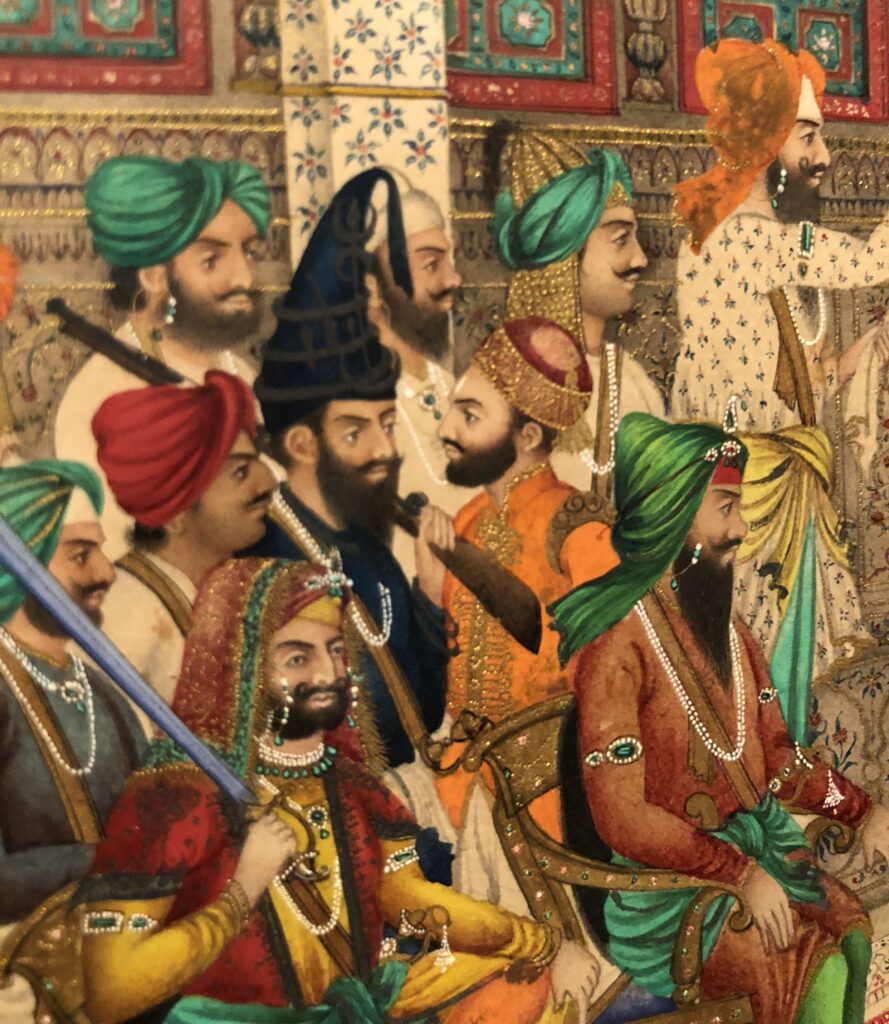
The Thakur was unable to tolerate the king’s disrespectful behaviour towards the Vaisnavas and the Bhagavatam, and addressed the king as follows:
You have the right to hold the position of kingship over your small kingdom, but the Supreme Lord, Jagannath Purushottama, is the King of all kings. Therefore it is mandatory that you show respect to His Bhakti Mandap, where His glories are sung daily.
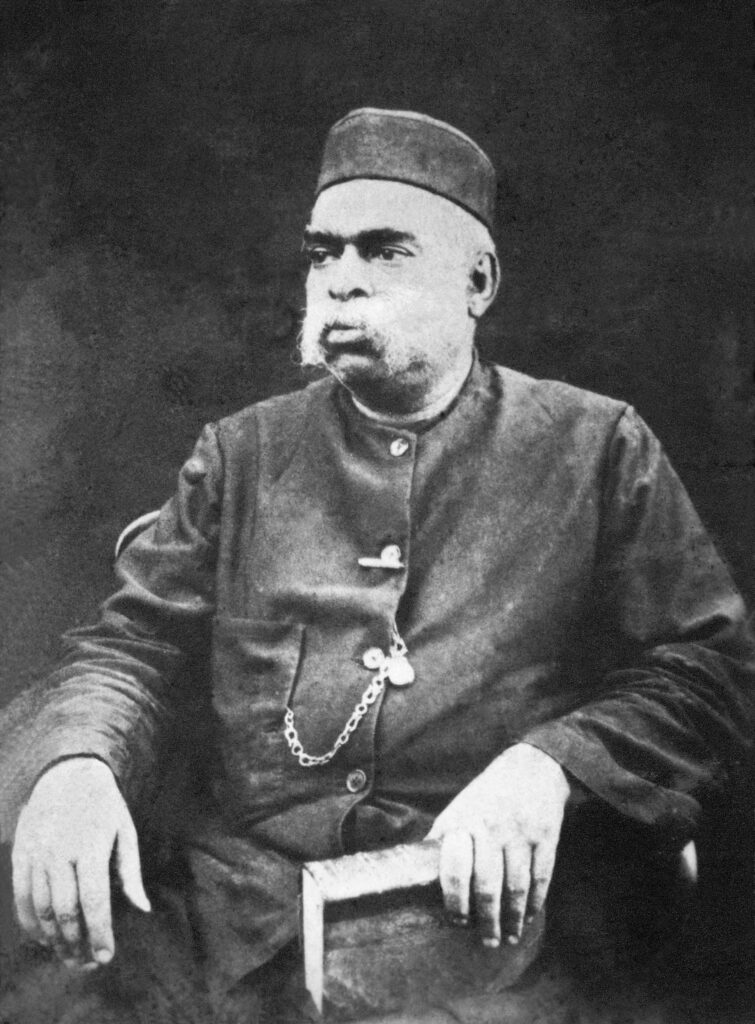
Realizing he had behaved badly, the King of Puri bowed down to the Srimad Bhagavatam and all the assembled Vaishnavas and begged them to forgive his offences. Some time after this event, Lalita Prasad Thakur recounts in his biographical notes that an attempt was made on the life of Thakur Bhaktivinoda by the Raja of Puri. In 1874, 80,000 rupees was misappropriated from the Jagannath Temple by the Raja. Thakur Bhaktivinoda learned of this and punished the king by obliging him to offer Lord Jagannath nivedya (cooked food) fifty-two times per day. The raja’s treasury was soon depleted, and in anger he decided to avenge himself by assassinating the Thakur.
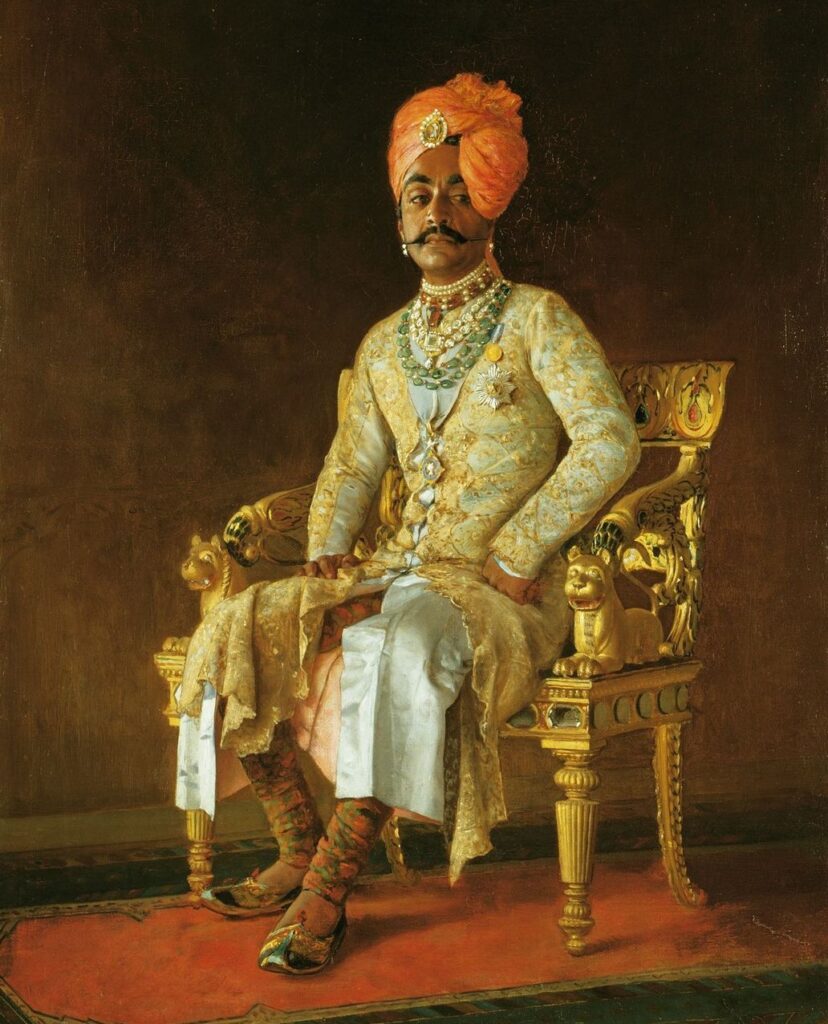
By this time the Thakur had been promoted and given the full powers of a Magistrate with specific responsibility for the Jagannath Temple. The Thakur’s position was very strong, and he was popular and famous in the District. Thus, as he would have been immediately arrested, the Raja could not risk killing him by ordinary means. The king therefore organized a secret fire sacrifice in the inner apartments of the palace with fifty pandits in attendance chanting mantras, with the intention of killing the Thakur by mystic influence.
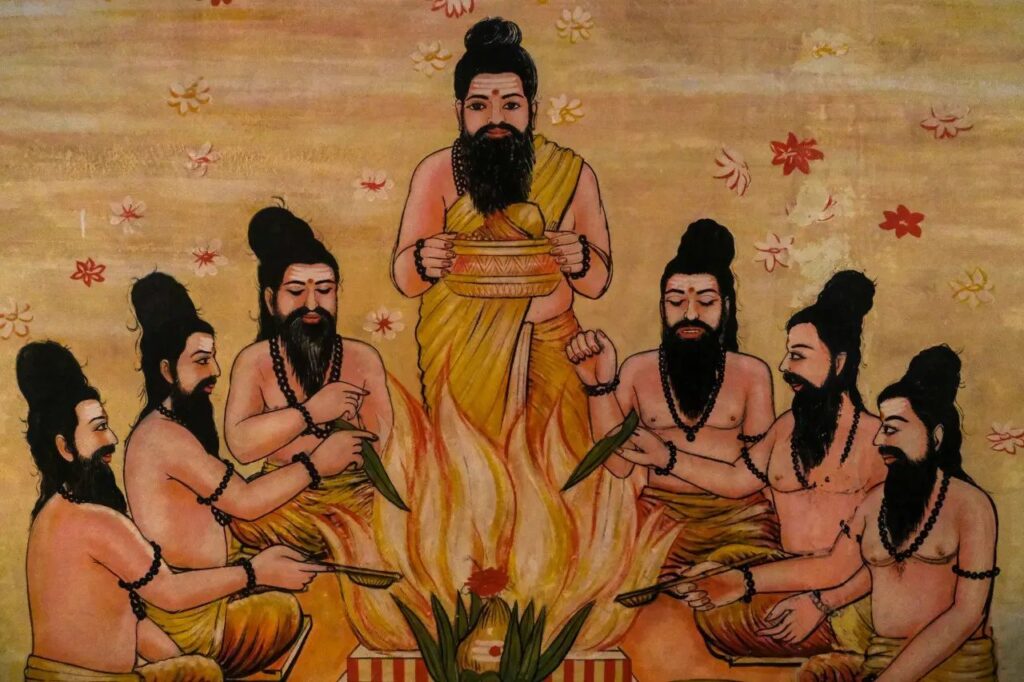
Although all of this was conducted with the utmost secrecy, still, information of the king’s activities was daily passed on to the Thakur by informants. After thirty days of yajna (sacrifice), when the last oblation of clarified butter was being poured on the fire, Thakur Bhaktivinoda was meant to have died. Instead, at that very moment, the Raja’s dear and only son perished within the palace. In recalling this period in his autobiography, the Thakur only mentions it indirectly:
The king and other persons connected to the temple used to commit many illegal acts. I would go there to prevent all such things, and thus I made enemies of the king and the king’s men. Because I was helped by Lord Jagannath, no one was able to harm me in any way.
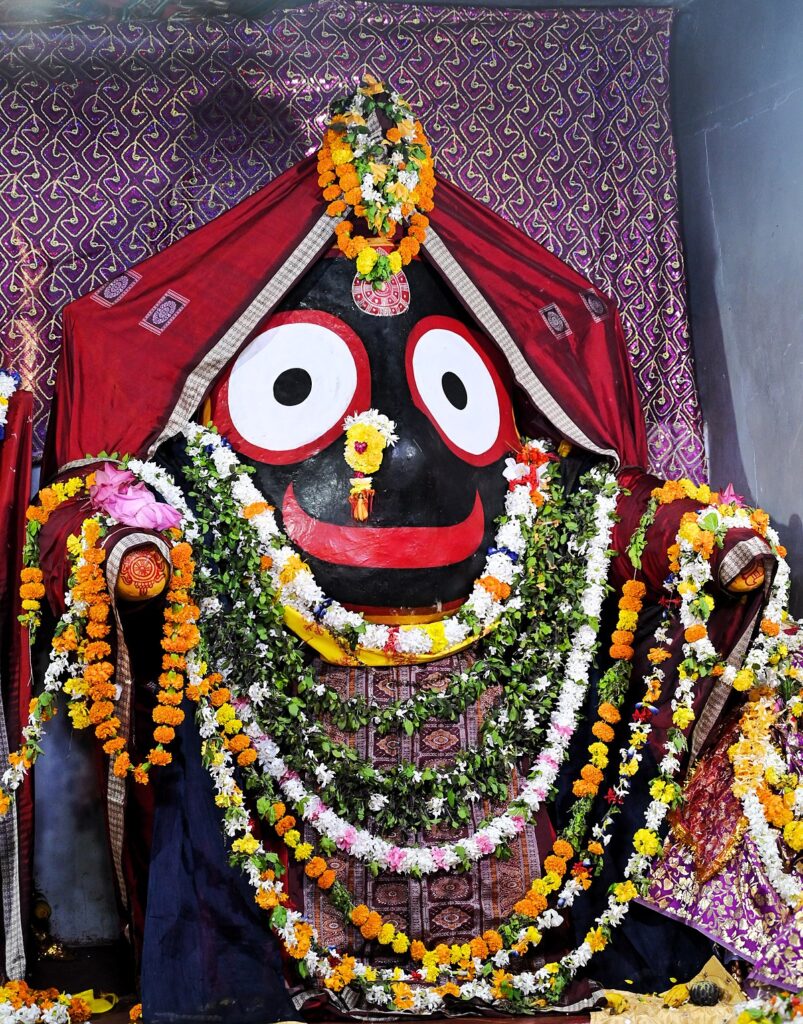
After five wonderful years of service at Jagannath Puri, the Thakur had to leave to settle urgent family business. He was then posted to various other towns in Bengal. In a communication to his son, Lalita Prasad, the Thakur recalled his stay at Jagannath Puri as a time of great happiness:
Just as the Jagannath Temple is very lofty and beautiful, so also the service of the Deity was wonderful. To see it was charming to the mind. Daily, from five-to-seven hundred people were present to see the routine festivals like the evening arati, etc. What bliss! Many kinds of pilgrims came from all over India to attend the religious festivals. Seeing that, one’s eyes are soothed. O Lalu, [Lalita Prasad] when you behold all these pastimes with a pure heart, only then can these events be understood.
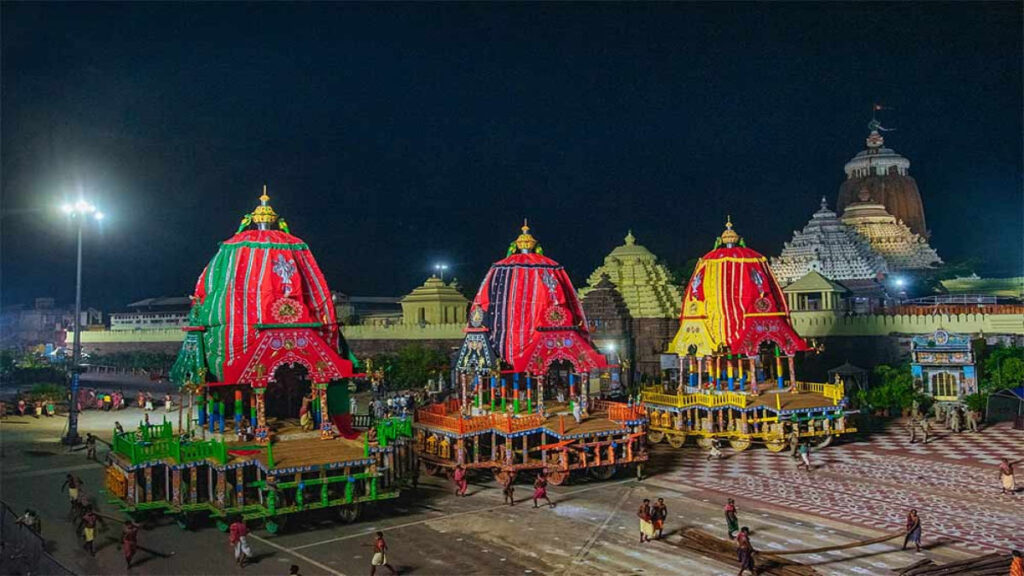
There were many celebrations, like Dola-yatra, Rathayatra, etc. … Taking many constables … I made such great exertions to oversee the pilgrims – how can I write of it all? I would make favourable arrangements for the pilgrims to see the Deity and take prasada, and I would hear the people’s complaints … I spent my time in Puri in great happiness, seeing the festivals, acquiring knowledge and devotion. Purushottama-ksetre is directly Vaikuntha [the spiritual world], what doubt is there?
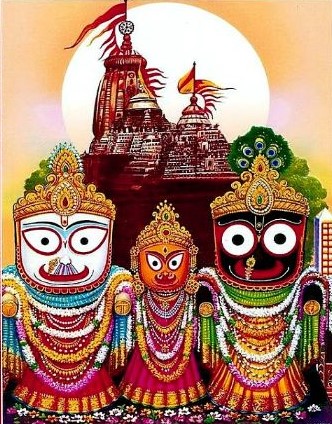
[Excerpts from “The Seventh Goswami” by Rupa Vilas Das and Bhaktivinoda Thakur’s Autobiography]

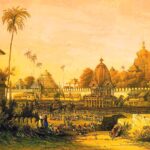
2 Comments
Thank you so much K-pop! This is just amazing..
Krishna-nama bhulibe na 🙂
Nm Kd , what an incredible individual Bhaktivednode Thakur was and of course continues to be